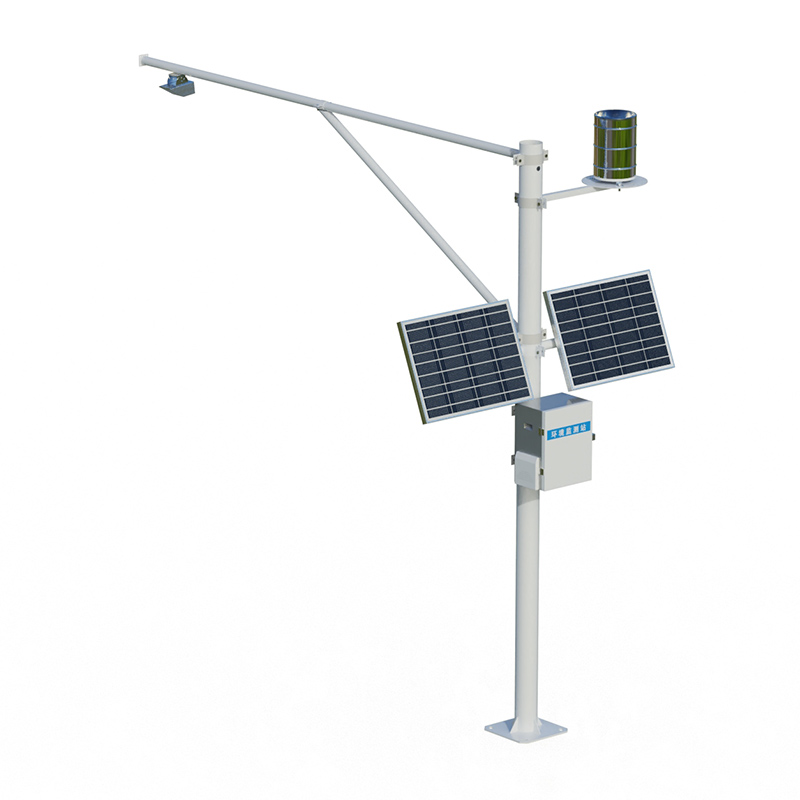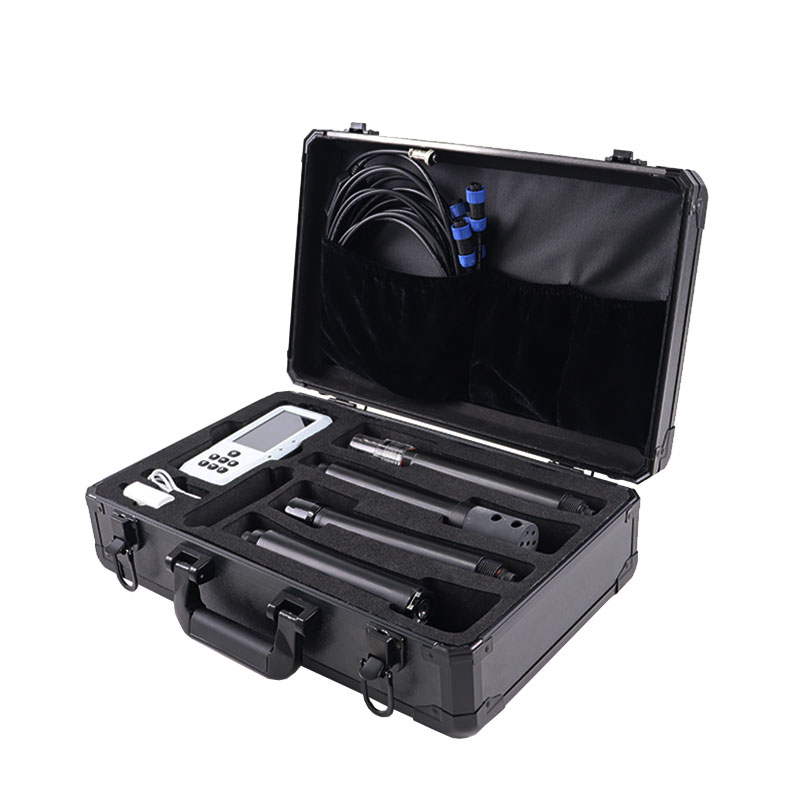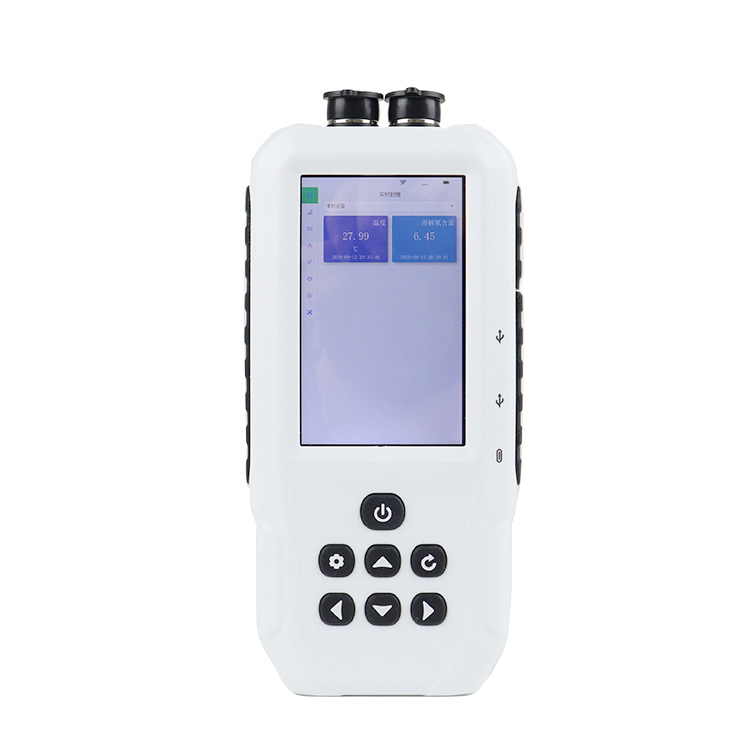Product Center
-
Hydrological equipment monitoring station
-
Water Quality Monitor Sensor
-
Plant protection equipment
-
Food Testing Equipment
- Rainfall Monitoring employs K-band radar for non-contact monitoring of rainfall and water level
- Wheat Fusarium Head Disease Monitoring System: A Wheat Disease Prediction Solution Based on Spore Capture and Built-in Model
- Water quality monitoring system: Integrated Water Quality Analysis Equipment for Monitoring Water Temperature, Conductivity, pH, and Dissolved Oxygen
- Soil Moisture Monitoring Simultaneously Monitors Moisture, Temperature, and Conductivity of Three Soil Profiles
- River flow and streamflow monitoring Integrated Water Level, Flow Velocity, Discharge, and Rainfall Monitoring
- Soil profile moisture meter can measure soil profile moisture, temperature, and electrical conductivity
Shandong Fengtu IOT Technology Co., Ltd
Sales Manager:Ms. Emily Wang
Tel, Whatsapp:+86 15898932201
Email:info@fengtutec.com
Add:No. 155 Optoelectronic Industry Accelerator, Gaoxin District, Weifang, Shandong, China

River flow monitoring system
Model:FT-SW3
Brand:fengtu
Related products
Product details
1.River flow monitoring system product overview
River flow monitoring system measures water flow in open channels and rivers, providing real-time water, weather and flood information.SW3 is a fully automatic hydrological online monitoring system based on microwave technology, which can measure water level, flow rate, flow rate and rainfall in the channel at the same time.It uses advanced K-band plane radar technology to measure the flow rate and water level of water bodies through non-contact methods, and calculate and output real-time cross-sectional flow and cumulative flow according to the built-in software algorithm; it can be used for non-contact flow measurement in rivers, irrigation canals, underground drainage pipelines, flood prevention warnings and other occasions; the product has the characteristics of low power consumption, small size, high reliability and convenient maintenance; the measurement process is not affected by factors such as temperature, silt, river pollutants, and floating objects on the water surface.
2.River flow monitoring system application field
1.Measurement of flow velocity, water level, flow and rainfall in rivers, lakes, tides, reservoir gates, groundwater pipelines, irrigation channels, etc.
2.Auxiliary water treatment operations, such as urban water supply, sewage discharge monitoring, etc.
3.Flow calculation, inlet and drainage flow monitoring, etc.
3.Features of River flow monitoring system
1.Non-contact measurement, calculate flow in combination with cross-sectional parameters, and is not affected by wind, temperature, haze, silt, sand, floating objects, etc.
2.It is suitable for a variety of measurement conditions, and is not affected by corrosion and foam, and can output measurement data of flow velocity, water level and flow.
3.The flow rate and water level use a planar array radar antenna, with its own angle measurement function, the equipment is small in size and easy to install.
4.Convenient configuration software can easily configure parameters according to actual needs to adapt to different usage conditions.
5.Not affected by changes in water vapor, temperature and pressure in the atmosphere
4.River flow monitoring system monitoring platform
1.CS architecture software platform, supports direct observation of mobile phones and PC browsers without additional software installation.
2.Support multiple accounts and multiple devices to log in
3.Support real-time data display and historical data display dashboard
4.Cloud server and cloud data storage are stable and reliable, easy to scale, and load balancing.
5.Support SMS alarm and threshold settings
6.Support map display and viewing device information.
7.Support data curve analysis
8.Support data export table form
9.Supports data forwarding, HJ-212 protocol, TCP forwarding, http protocol, etc.
10.Support data post-processing function
11.Support external running of javascript scripts
5.River flow monitoring system summary indicators
Supply voltage: 100mA (operation), <1mA (sleep);
Working voltage: 12V power supply
Operating temperature: -35℃~60℃;
Storage temperature: -40℃~60℃;
Field protection level: IP68
Signal output: RS485/MODBUS protocol;
6.River flow monitoring system technical parameters
Water level measurement
Range measuring range: 0.1-40 meters
Range measurement accuracy: ±5mm
Range measurement resolution: 1mm
Interval time: 1-5000min
Flow velocity measurement
Range measuring range: 0.15~15m/s
Speed measurement accuracy: ±2%
Speed resolution: 0.01m/s
Flow measurement
Flow rate = average flow rate x overcurrent cross-sectional area x correction coefficient
The average flow rate is collected by the flow meter and calculated by the model.
The overcurrent section area is calculated from the water level measured by the water level meter and the cross-sectional information
Rainfall monitoring
Measuring range: rain intensity 0~4mm/min
Measuring accuracy: ±0.2mm
Resolution: 0.2mm
Rain diameter: φ200mm
Power supply method: combined power supply of solar panels + battery
Solar power: 100W (optional)
Battery parameters: DC3.7V 10Ah
Support height: vertical pole 3 meters cross arm 3 meters
Working environment: -45℃~85℃ (not freezing state)
7.Precautions for installing River flow monitoring system
1.Installation environment
There are no huge stones in the test channel blocking the water, no huge vortexes, turbulences, etc.
The test channel section should be straight, stable, and concentrated
The test channel section needs to be hardened, and the measurement section should be regular
The test channel section should be kept smooth to prevent floating objects from accumulating
2.Installation height
Recommended installation height 3-4 meters
3.Flowmeter installation direction
The flowmeter beam is recommended to be in the direction of incoming water
Attachment: Hydrological Monitoring Station Construction Manual
1.Pointing principle:
1.The land use situation within 1,000 meters near the monitoring point is relatively stable;
2.The horizontal plane around the monitoring point should ensure a capture space of more than 270°.If the monitoring point is close to the building, the horizontal plane around the monitoring point should have a free space of more than 180°;
3.The surrounding environment of the monitoring point is relatively stable, the address conditions must be stable for a long time and sufficiently solid, and safety and fire prevention measures are guaranteed;
4.There is no strong electromagnetic interference near the monitoring point, no strong oscillation source, and there is as stable lightning protection equipment as possible around it;
5.It should be considered that the monitoring point location has unobstructed and convenient access channels and conditions for easy maintenance;
6.The height of the monitoring point sensor should be within 2-5 meters above the ground;
7.There is no obvious fixed source of pollution within 50 meters around the monitoring point;
8.When the weather station is installed on non-supplied customized monitoring rods, the load-bearing capacity of the foundation rod must be considered;
9.The monitoring point should try to choose a place with sufficient light (to keep the daylight time above 6H as much as possible) or there is a stable and reliable AC220V power supply around the monitoring point.
2.Point confirmation
After the point selection is completed, mark the points on the monitoring area plan.Submit the floor plan with the monitoring point orientation mark to Party A for confirmation and signature.
III.Construction
1.Pre-buried monitoring rod floor cage
1) According to the actual geological conditions on the site, the pre-embedded pit of the monitoring rod foundation is constructed by manual cooperation with an excavator.The size of the embedded pit is 100cm (length) * 100cm (width) * 100cm (deep).If over-excavation occurs, discarded soil shall not be used to backfille on site, and gravel or sand shall be used to backfille to the design value.The edge of the buried pit should be directly south and north;
2) The threaded thread of the embedded part stands vertically in the pit facing upwards and fills the pit with concrete (cement: sand = 1:3) to slightly higher than the ground level;
3) According to the season and local climate environment, dry for about 3 days until the cement foundation is completely solidified.
2.Equipment installation and monitoring lever stand up
1) Use matching bolts to fix the equipment on the equipment bracket and pay attention to the installation of the flat elastic pad;
2) Use matching bolts to fix the equipment bracket about 3 meters away from the monitoring rod;
3) Install the solar panels on the solar panel bracket with matching bolts;
4) Use matching tightening to install the radar water level sensor on the flange and fix the flange to the bracket.
4.Quality control requirements and safety precautions for construction
1.The entire process of monitoring rod construction should be operated in sequence, with the appearance of the rod being straight, streamlined, smooth and vertical;
2.The solar panels are inclined 45° toward the south;
3.The rust-proof layer of the monitoring rod must not be damaged;
4.The cable joints are firm and reliable, waterproof and insulated, and not easily exposed;
5.Pay attention to the safety of traffic pedestrians and driving during lifting;
6.When lifting the monitoring rod, be sure to tie the rope to control the stable posture of the lifting object;
7.Warning signs should be set during lifting.
5.Construction quality assurance measures
1.The main materials required should comply with the design documents and current standards, and must have a factory certificate of conformity, and tests should be carried out if necessary.
2.Construction shall strictly control quality in accordance with the requirements in the specifications.Process inspection is also carried out, and construction can only be carried out after the previous process is qualified.
3.Strengthen quality awareness, organize construction strictly in accordance with the design, current construction specifications, rules, as well as the owner's special requirements and on-site instructions, and implement the excellence work throughout the construction and production process to ensure the quality of the project.
4.Strengthen process quality control, organize production strictly according to the quality assurance system, formulate operation standards, process standards and inspection standards for each process and link, record the implementation of process standards, so that each process is connected in an orderly manner and achieve traceability.
5.Strengthen project management, implement the technical responsibility system, formulate targeted special construction plans, and conduct technical briefings seriously.
6.During construction, ensure that each sub-project is based on high quality and all quality is qualified, and a model project is established to drive the implementation of all projects with the model project.
6.Construction period guarantee measures
1.Strengthen technical guidance, strictly manage, and carry out effective organization and coordination.
2.Strengthen management, improve the internal economic responsibility system, give full play to the role of economic leverage, and fully mobilize the enthusiasm and consciousness of the construction team as an organization and ideological guarantee to ensure the construction period.
3.Organize teams with rich experience and strong construction capabilities to come on the field; have excellent personnel and machinery and equipment configurations and complete to ensure that the construction plan is completed every day.
4.Grasp the node goals in stages.In order to facilitate inspection, assessment and adjustment, under the control of the overall construction plan, the construction plan goals of the left and right areas are prepared, and the progress of the point is emphasized to realize the overall plan with effective control.
5.Strengthen the management of material procurement and supply, and promptly ensure that the material supply meets the needs of engineering construction.
6.Actively coordinate relationships and create a good construction environment.Organize construction according to the procedures so that various factors affecting the progress can be effectively controlled.
7.Safety construction management measures
During the implementation process, strictly abide by regulations and regulations on safety, health and environmental sanitation.Safety devices, equipment and protective equipment and other effective measures to protect the lives, health and safety of on-site construction and supervision personnel;
8.Environmental protection measures
1.Disposal of waste: Materials that are not suitable for filling shall be stacked neatly or transported to designated places in a timely manner;
2.Construction wastewater is discharged to the sewer in a timely manner and should not pollute natural water sources.Construction sites should prevent and control noise pollution, and construction vehicles must not honk horns;
3.Prevent the excavated soil from being flushed or overflowed by rain, and secondary dust is likely to occur when encountering dry weather.The transport entrances near the excavator need to be cleaned in time.
This paper addresses:https://fengtusz.com/Water-Level-Monitoring-System/River-flow-monitoring-system.html
- Previous Article :Rainfall Monitoring
- Next Article:no more
Related article
-
High-Performance GNSS Receivers for Precision Positioning and Displacement Measurement" Chinese
2025-10-28 -
GNSS Monitoring Station: Unleashing Multifaceted Dam Protection
2025-03-31 -
Spore Catcher: A Powerful Tool for Monitoring Plant Fungal Diseases
2024-09-18 -
Facility Agricultural Weather Stations Promote Smart Agriculture
2024-06-27 -
Agricultural drones increase productivity
2024-06-20 -
How do irrigation water and fertiliser plants work?
2024-05-22 -
The Working Principle and Wide Applications of Radar Flow Meters
2025-01-10 -
What is an integrated weather station?
2024-04-24


 Get a Free Quote
Get a Free Quote






